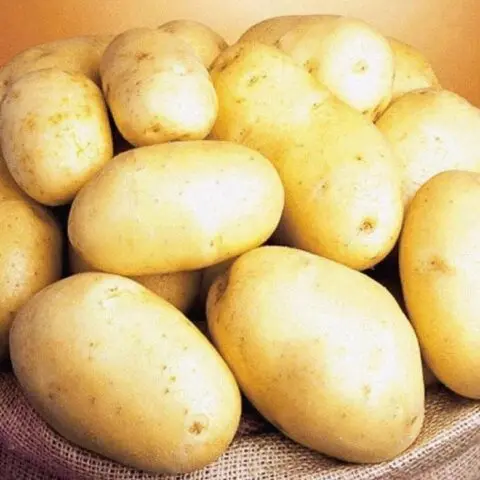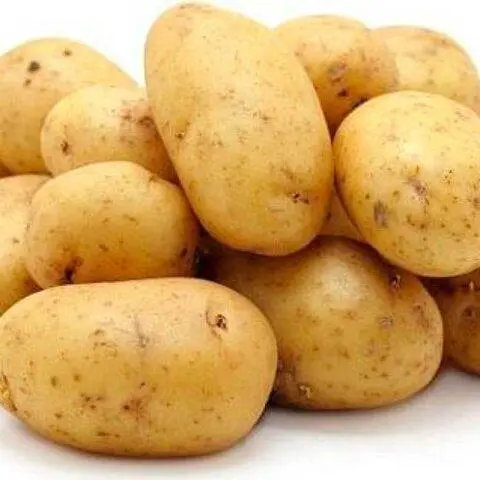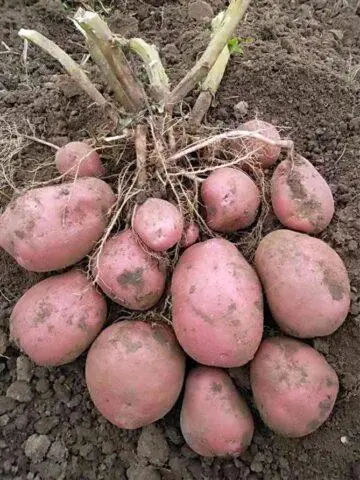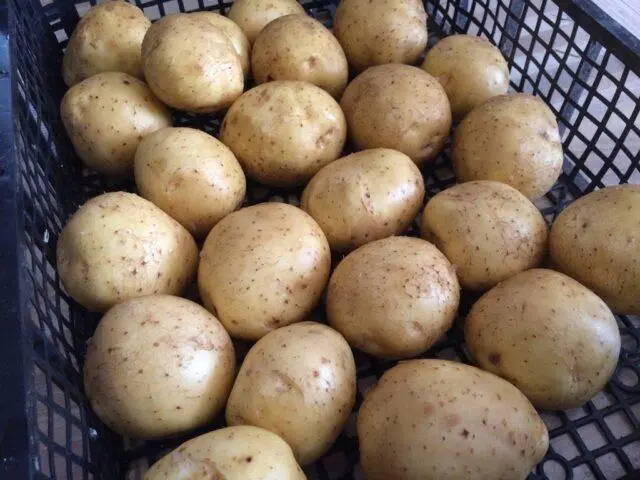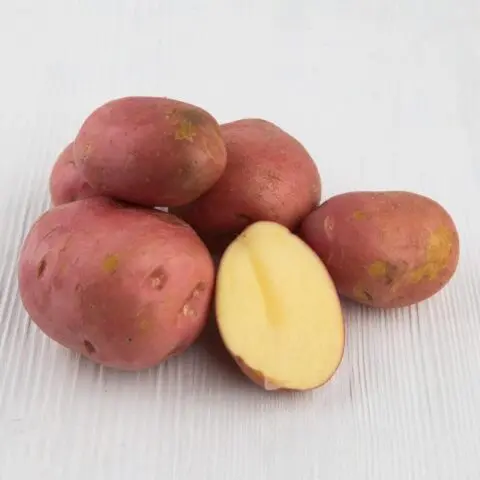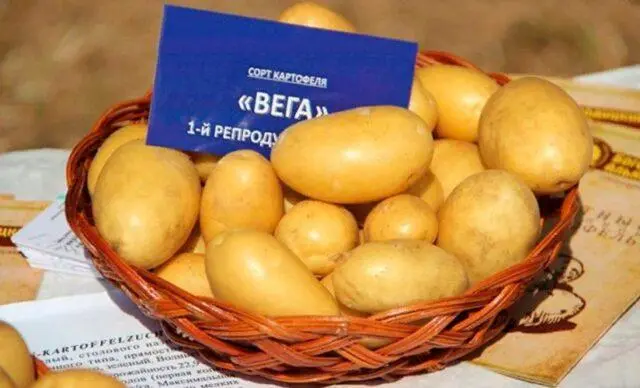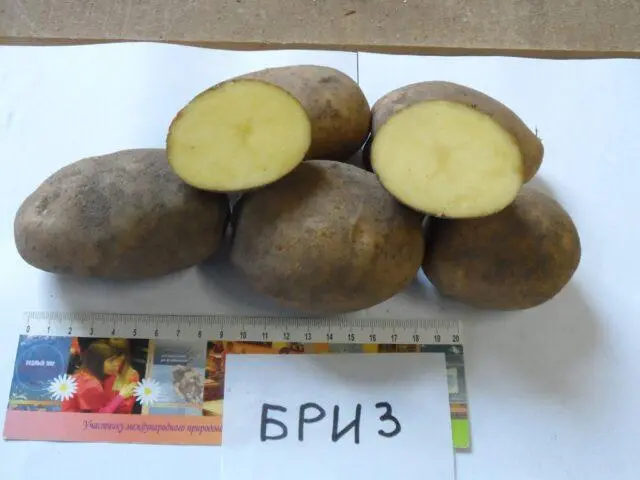Contents
Potato, like all nightshades, is an agricultural crop most susceptible to various diseases. All parts of the plant are rich in carbohydrates and water – this is an excellent breeding ground for various pathogens. Among them, potato cancer poses one of the main threats. It can ruin the entire crop, causing damage to large farms. In the photo you can see potato cancer in different stages of development.

Cancer of a vegetable begins with eyes
Description of potato cancer
Potato cancer is spread all over the globe, it is registered in more than 40 countries of the world. In the CIS, the first case of the disease was recorded in 1935 in Ukraine. The disease is easily recognized by its appearance. With potato cancer, growths resembling cauliflower form on tubers, stolons, and root collars. Size – from a pea to a size exceeding the root crop itself.
Tuber eyes and young sprouts are the first to fall ill. With severe damage, growths can form on the stem, flowers and leaves. The color of the neoplasm on the tuber underground is white. Green on stems and leaves.
When the growing season ends, the growth turns black and rots. Potato cancer does not develop at too high and low temperatures. Therefore, it is almost never found in the south and in the northern regions.
The most favorable temperature for the development of the disease is + 16-18 ° C. In the spring, when such a temperature is established, the spores of the fungus unfold, and the causative agent of the disease begins to develop. It is a zoospore that can actively move. Over the summer, the fungus gives up to 17 generations. Lives in the soil up to 10-15 years.
A description of the bacterial canker of potatoes with photos and methods of treating the soil after the detection of the disease will help in the fight against the disease.
The danger of potato cancer for humans
For humans, culture cancer, according to the latest data, is not dangerous, because the pathogen cannot live in the human body. But the infected vegetable is not used for food. The appearance of the affected potato is rather unpleasant in appearance. The vegetable itself completely loses its taste. Even as feed for cattle, it can only be used in boiled form, and you need to cook for at least an hour to destroy the spores of the pathogen.
Causes
Potato cancer is a dangerous disease caused by the fungus Synchytrium endobioticum. After winter, only about 30% of the spores remain, but they are very prolific.

Under favorable conditions, the disease can quickly spread throughout the site.
Causes of foci of disease in potato plots:
- Infected planting material purchased from the market.
- Non-observance of crop rotation.
- Manure from cattle fed on infected potatoes.
- Precipitation.
- Inventory, tools, machines for mechanized harvesting and transportation.
- Cultivation of potato varieties resistant to cancer.
Tubers and bushes with identified signs of the disease must be carefully destroyed. Plants are either completely burned or buried to a depth of at least 1 m. Spores of the fungus under such conditions can remain viable for many years. Therefore, holes are made in remote places to prevent accidental digging or plowing of the earth in the area.
Symptoms of potato cancer
Of all potato diseases, cancer is the most recognizable disease, but with a small lesion, it is detected only when digging potatoes. Main symptoms:
- On tubers. When separating planting material from the total crop, they do not always pay attention to tubers with mild tubercles and discolored spots of affected areas. Such initial symptoms are clearly visible on root crops with colored skins. On mature tubers, the growths have an uneven, strongly bumpy surface, first light, then dark, almost black.
- On stolons. If they are affected, then they will no longer give tubers. However, their growth continues, and several cancerous growths appear on them, forming a chain.
- On stems. Most often, small growths appear near the root collar. If the stem is affected only on one side, then it is bent during the growing season.
- On the leaves. In the sinuses, occasionally – directly on the plate.
The growths are not covered, like a tuber, with cork tissue, therefore they are quickly destroyed by moisture and other causes. The causative agent is located in the internal tissues of the neoplasm, feeding on starch reserves. In the photo you can see what a tuber affected by potato cancer looks like inside, on a cut.
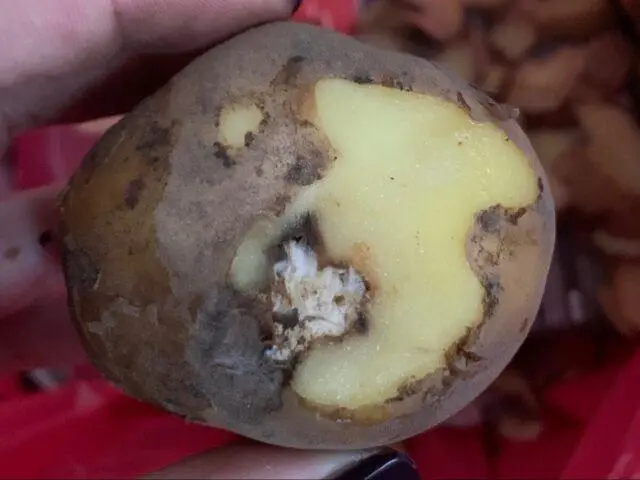
Potato cancer progresses gradually, capturing all large areas of the tuber
Measures to combat potato cancer
Potato cancer is a contagious disease. If even one affected tuber is found on the site, quarantine is introduced. As measures to combat the disease, agrotechnical and chemical methods are used.
Agrotechnics
Agrotechnical measures include the observance of crop rotation on the site, the use of green manure, the mandatory application of fertilizers, as well as the planting of varieties resistant to cancer.
Crop rotation involves growing potatoes in the same area no earlier than 3-4 years later. After it, vegetables of the Solanaceae family are not planted – sweet and bitter peppers, eggplants, tomatoes.
In the infected areas, green manure crops are sown – corn (not for food purposes), beans, peas, lupine and other legumes. Rye has a good effect in the fight against the fungus that causes potato cancer. Its roots secrete substances that prevent the spread of the disease.
Fertilization, especially urea, strengthens plants and increases their immunity to bacterial diseases.
They get cancer, although much less often, many representatives of nightshade – physalis, wild nightshade, tomatoes, etc. You need to refrain from planting these plants near potatoes.
Chemicals
The fight against potato cancer with chemicals consists of dressing seed tubers when purchased from unverified buyers and tilling the soil where diseased tubers have been found.
Before planting, root crops are treated with such effective preparations as Benomyl 500 (aka Fundazol), a systemic fungicide, or Maxim, a fungicide for pre-sowing treatment of seed potato tubers.
Nitrofen is suitable for an infected area. It is used only after consultation with specialists. It is best that they do the processing themselves. For 100 sq. m plot consume about 20 liters of Nitrofen at a 2% concentration. The drug belongs to a high hazard class. It is necessary to take all measures to protect against harmful effects when working with it. No plants can be cultivated on the treated area for 2-3 years.
preventive measures
To prevent the occurrence and spread of the disease, precautions must be taken. Potato tuber cancer cannot be cured.
Preventive measures:
- Treat potato tubers before planting with antifungal drugs.
- Be sure to use crop rotation on the plots and do not plant potatoes in the same place every year.
- Do not purchase seed material in quarantine zones.
- Cattle manure from areas with quarantine restrictions is also unacceptable for use.
- Nightshade crops, as possible carriers of the disease, are not planted either next to or near potatoes.
- If a quarantine zone for potato cancer has appeared nearby, for several years only those varieties that are resistant to the disease should be planted on your site.
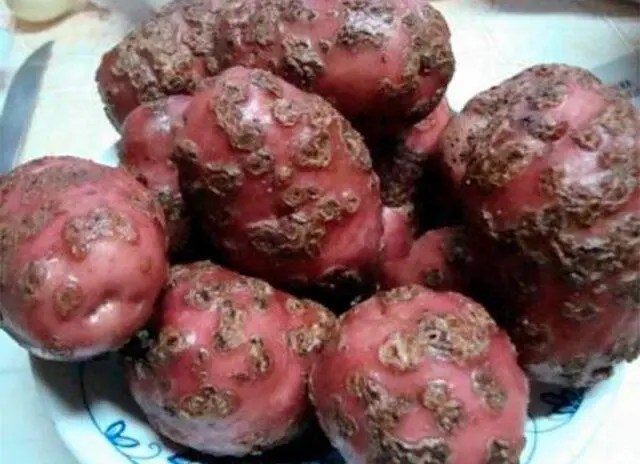
The causative agent of cancer can spread even with melt water or precipitation
Cancer resistant potato varieties
Breeders have bred potato varieties that are resistant to cancer:
- Queen Anne;

Queen Anna is a very early variety with good keeping quality.
- Gala;

Gala – yellow-fruited high-yielding variety
Bellarose;

Bellarosa is a German variety with red skin and light yellow flesh.
- Colombo;

Colombo – an early variety of Dutch selection
- Manifesto;

Manifesto – mid-early variety of Belarusian selection with pink skin
- Vega;

Vega is an early variety of German selection with a light skin
- Breeze.

Breeze is a mid-early variety of Belarusian selection with light yellow flesh
You can also name a number of varieties: Lugovskoy, Zhukovsky, Bezhetsky, Nevsky, Cardinal, Prior, Lasunok, Zarevo, Pushkinets, Condor and others.
A small list does not give a complete picture of the many varieties of potatoes that have a high degree of resistance to cancer.
Potato cancer even in the photo looks pretty unpleasant. It is all the more difficult to take such a tuber in hand. And although potatoes are affected by many serious diseases that can be treated with varying degrees of success, cancer stands out among them. Due to the fact that it was quickly recognized as a quarantine disease, it is not so widespread in the country.
Conclusion
Potato cancer is difficult to defeat, but everyone can prevent its occurrence. It is important not to miss the signs of the disease at the very initial stages of development and to prevent the further spread of the disease.










